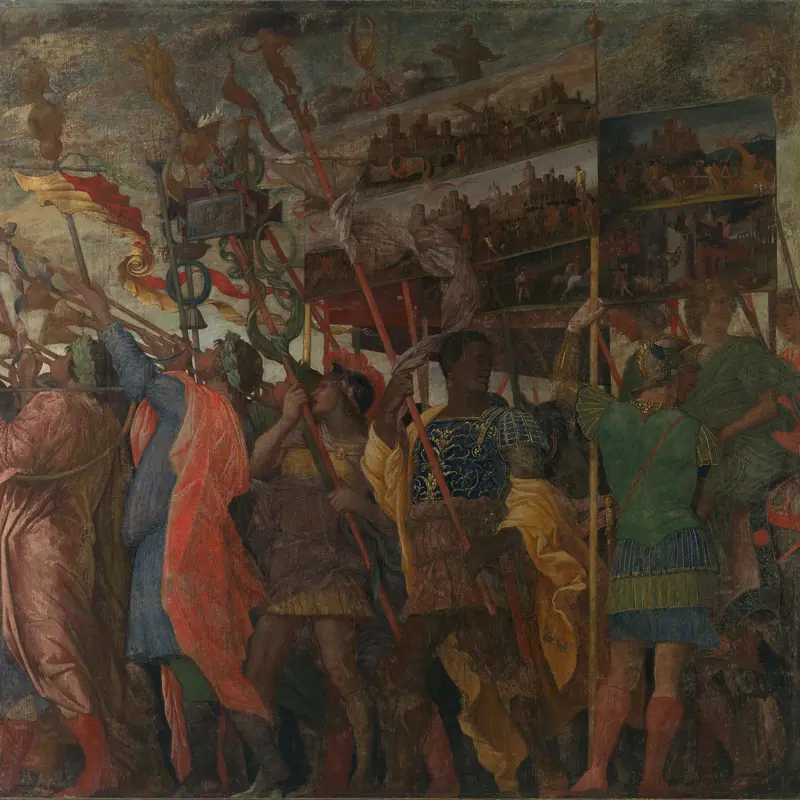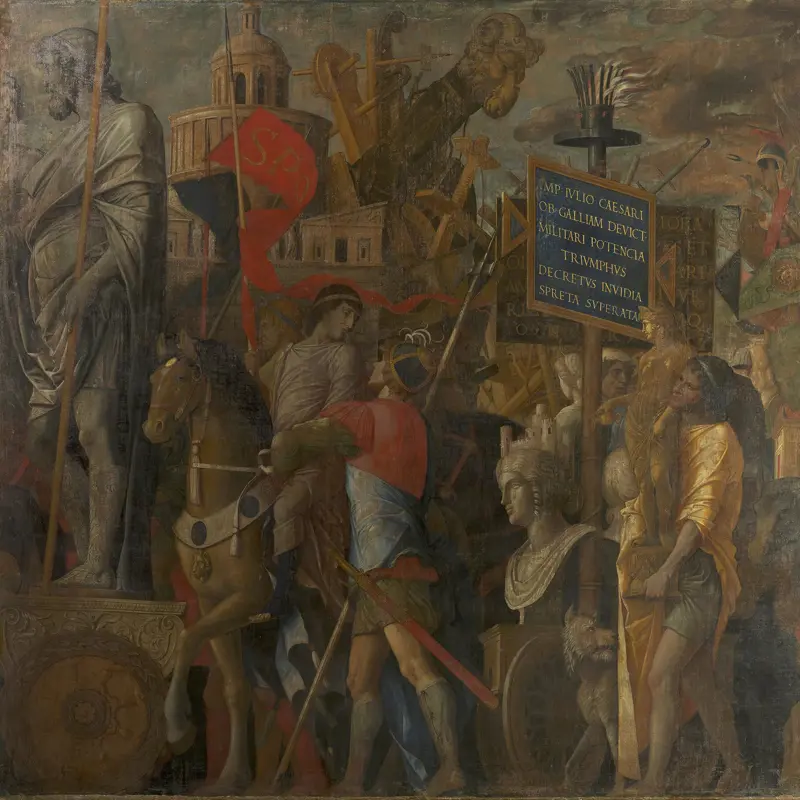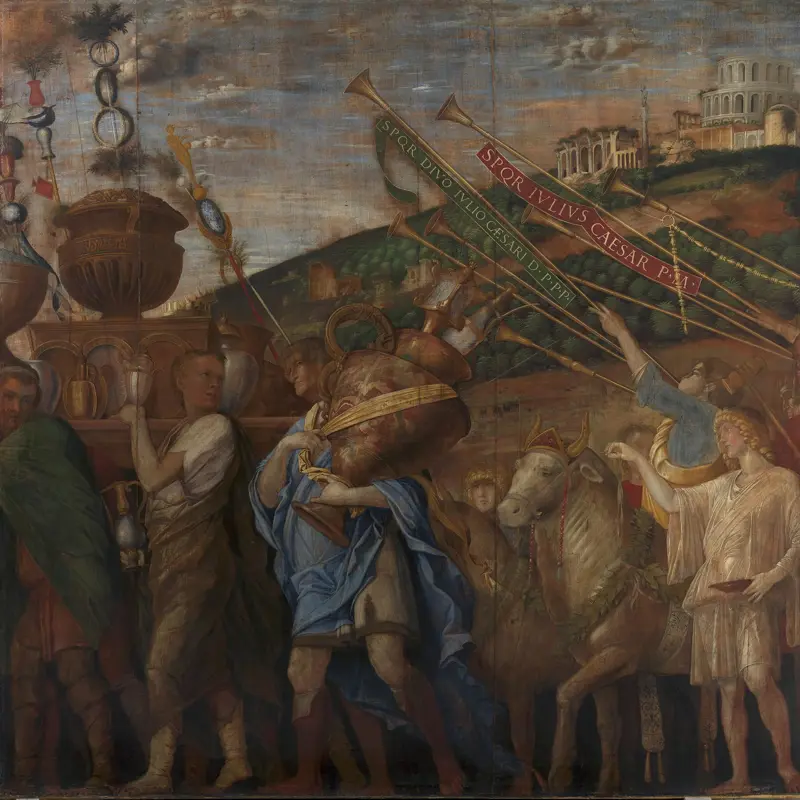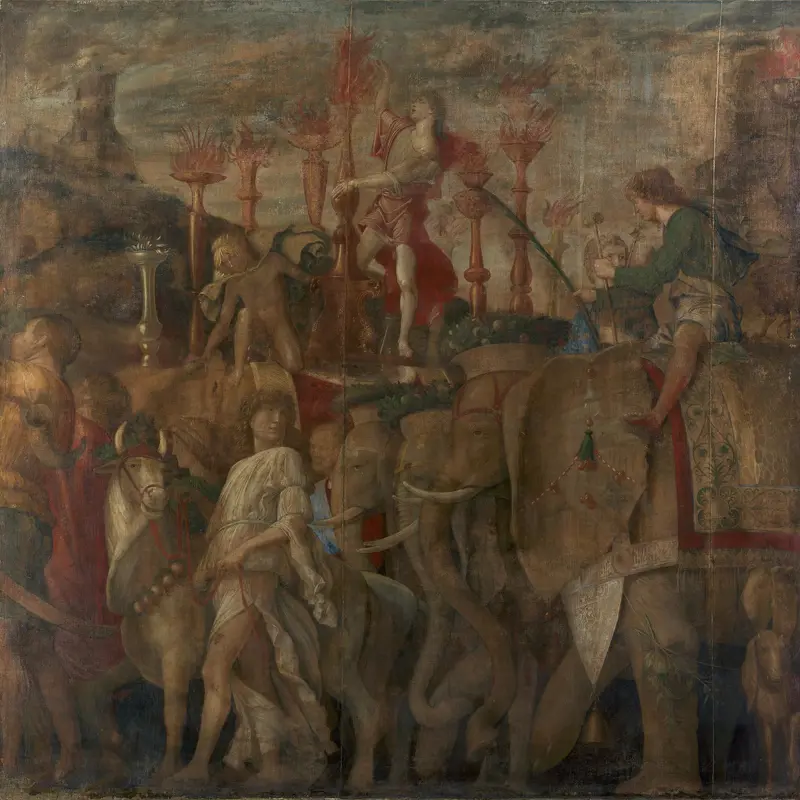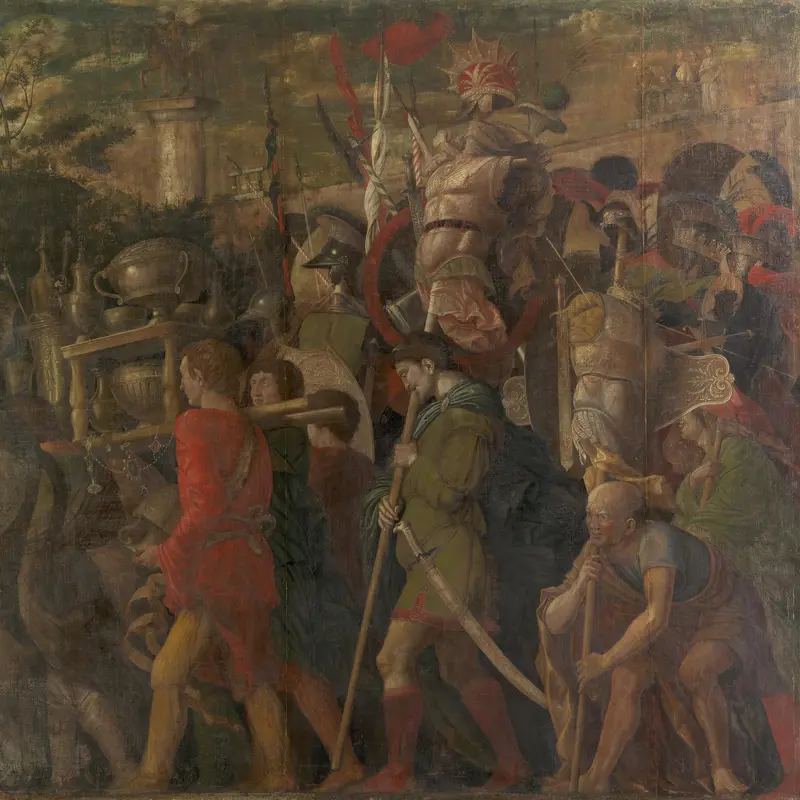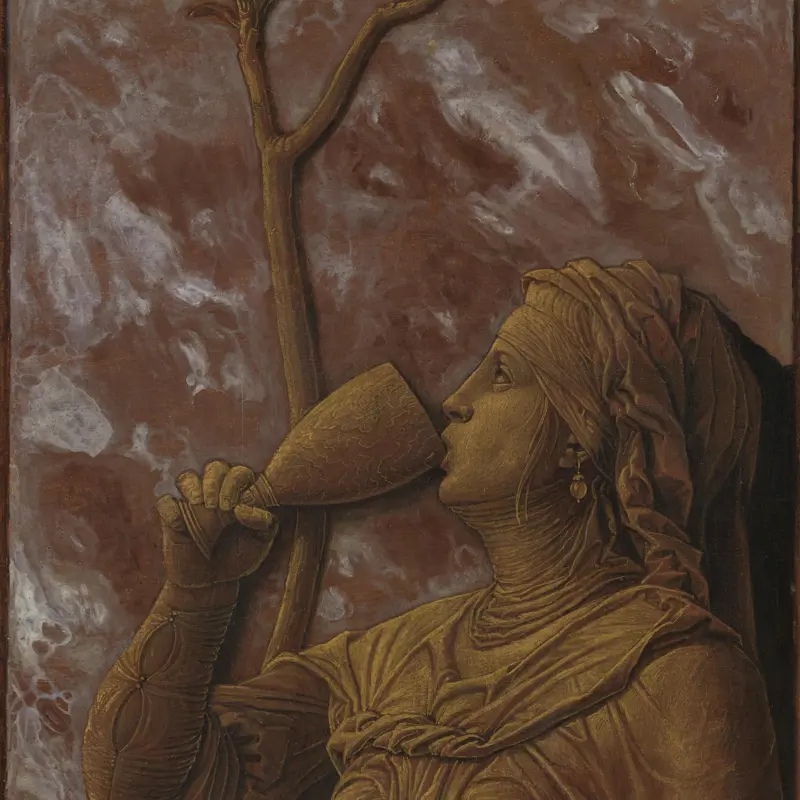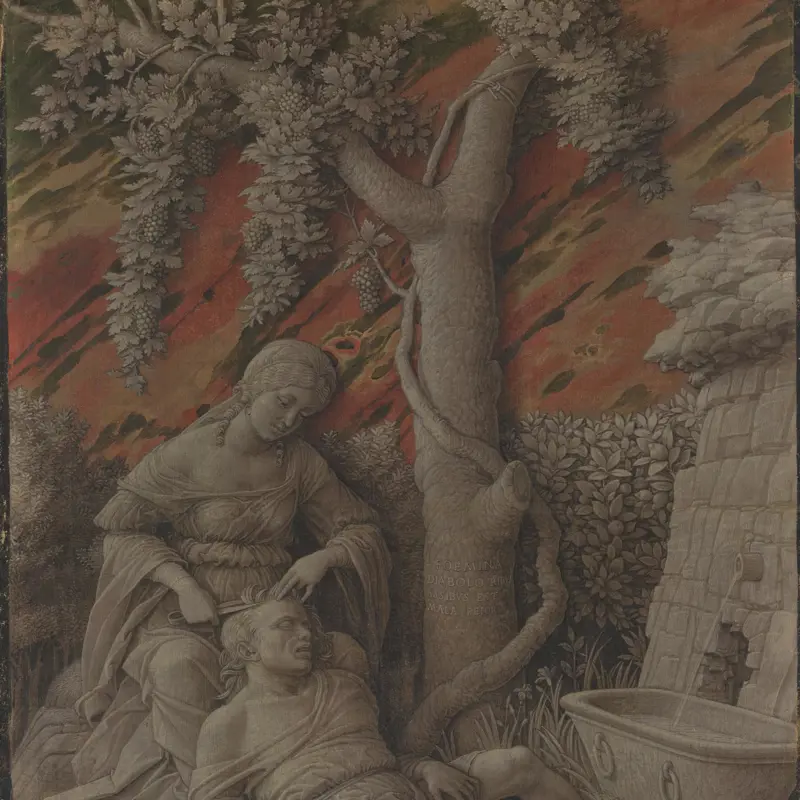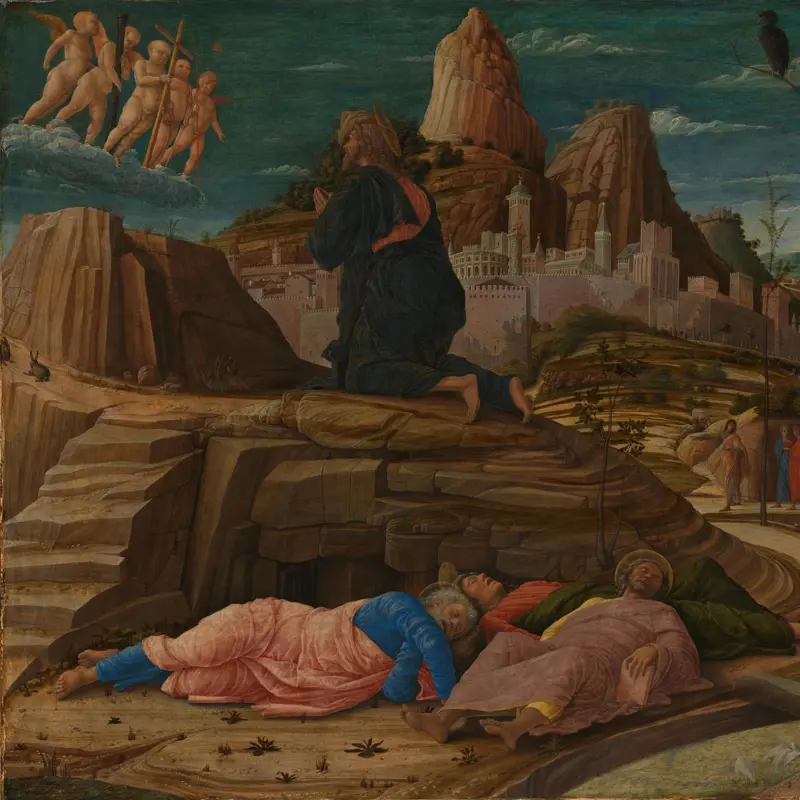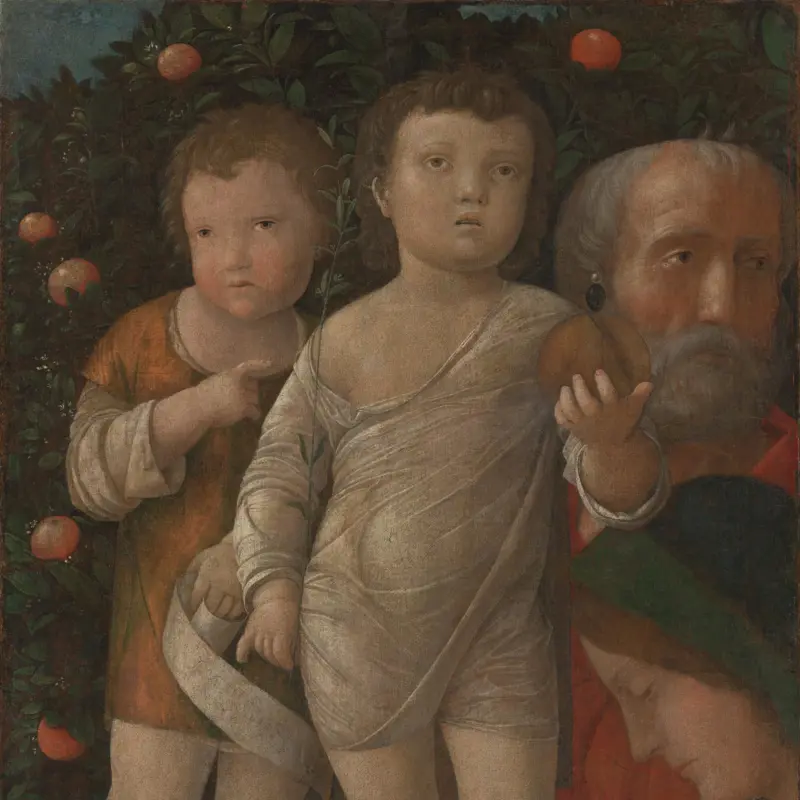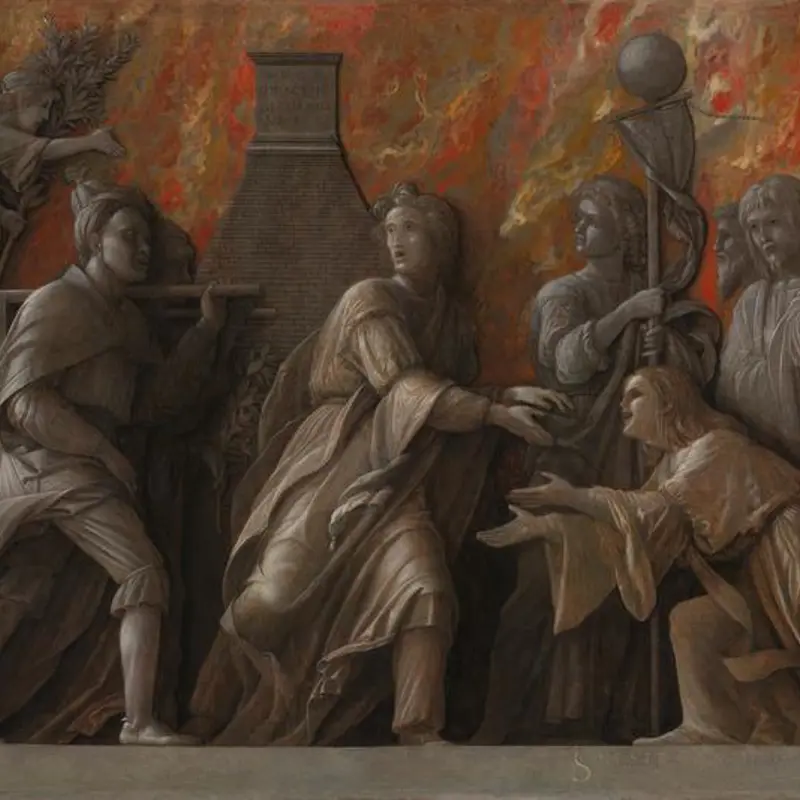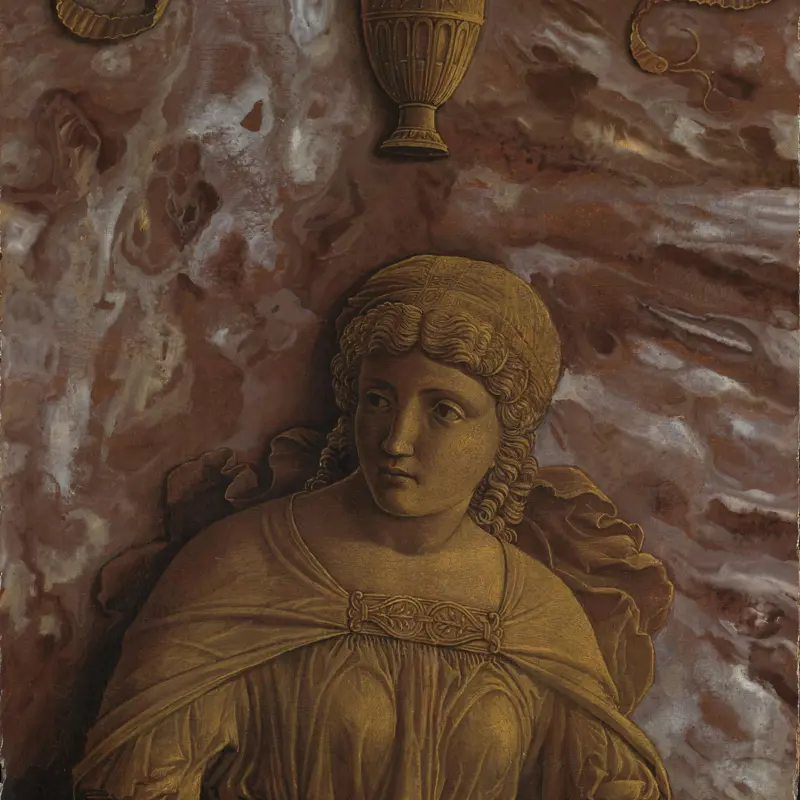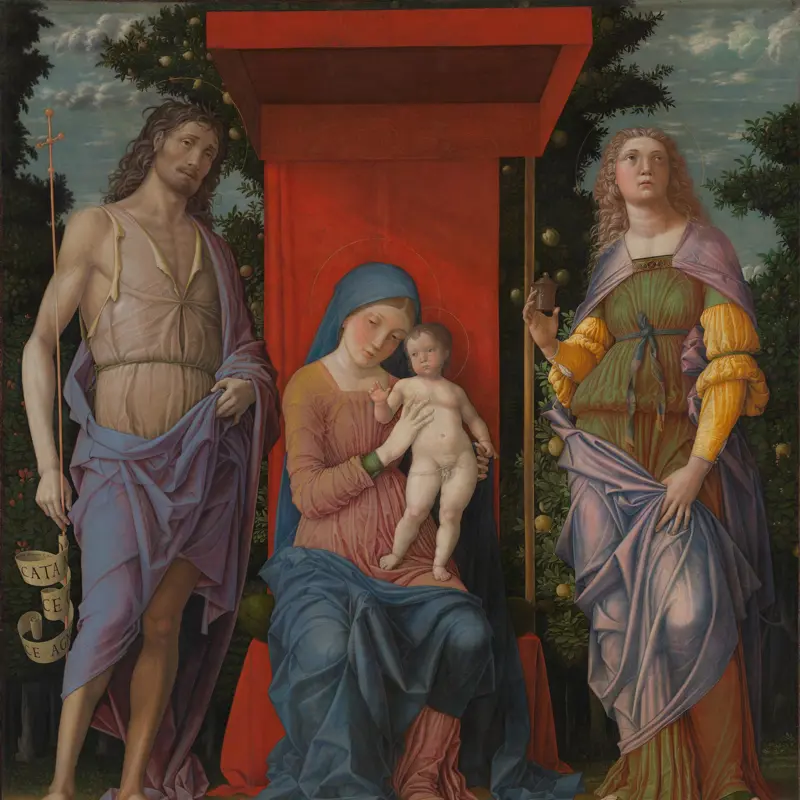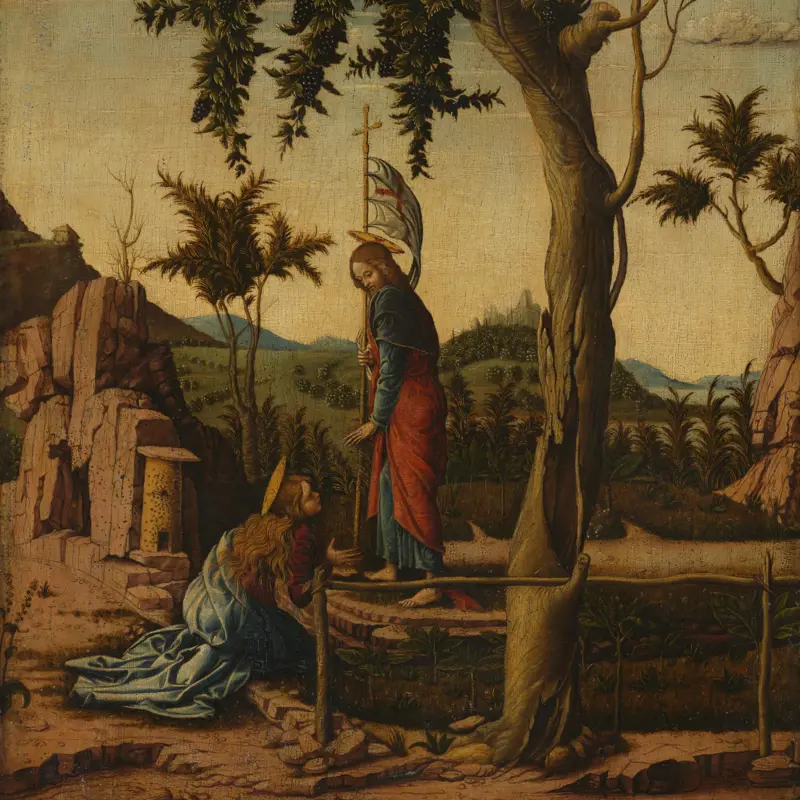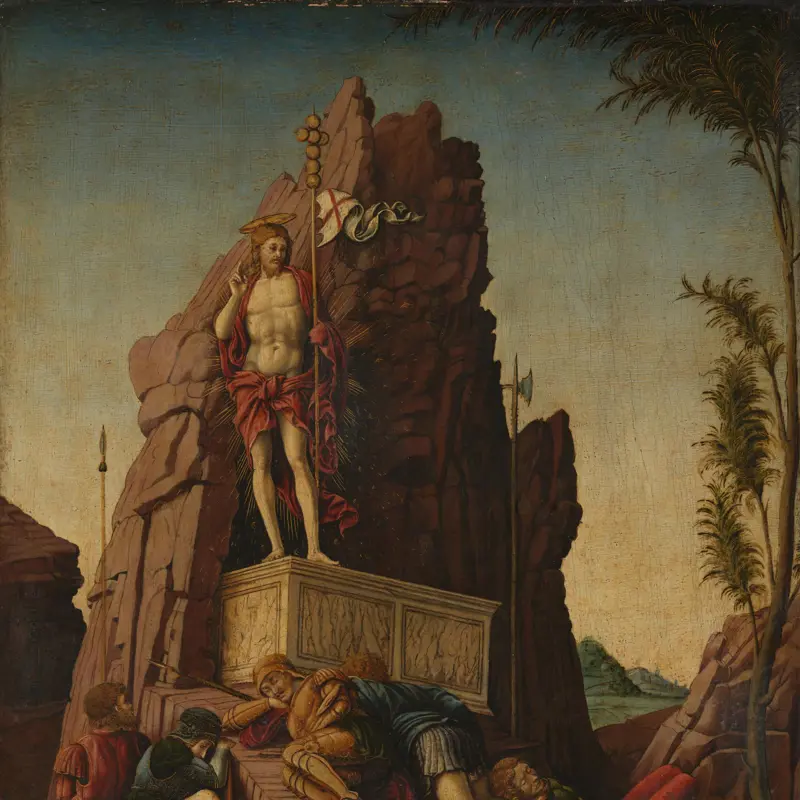Andrea Mantegna, 'The Triumphs of Caesar: 1, The Trumpeters', mid-1480s-before 1506
About the work
Overview
This canvas is the first of a series of nine painted by Andrea Mantegna depicting The Triumphs of Caesar.
Trumpeters herald the arrival of the triumphal procession celebrating the victories of Julius Caesar during the Gallic Wars (55–50 BC). They are followed by men bearing flags and streamers. Others carry torches and intricately painted banners showing battle scenes. Mantegna uses decorative armour and a bright yellow robe to draw our attention to a young Black soldier. He strides forwards, but his backwards gaze guides our eyes towards the next canvas and the procession which follows behind. His commanding presence at the head of the Triumphs might be intended to allude to the breadth of the Roman Empire.
Key facts
Details
- Full title
- The Triumphs of Caesar: 1, The Trumpeters
- Artist
- Andrea Mantegna
- Artist dates
- about 1431 - 1506
- Part of the series
- The Triumphs of Caesar
- Date made
- mid-1480s-before 1506
- Medium and support
- Egg tempera on canvas
- Dimensions
- 270.3 × 281.2 cm
- Inscription summary
- Inscribed
- Acquisition credit
- On loan from His Majesty The King
- Inventory number
- L1323
- Location
- Room 12
- Image copyright
- On loan from His Majesty The King, Royal Collection Trust / © His Majesty King Charles III 2023
- Collection
- Main Collection
About this record
If you know more about this work or have spotted an error, please contact us. Please note that exhibition histories are listed from 2009 onwards. Bibliographies may not be complete; more comprehensive information is available in the National Gallery Library.
Images
About the series: The Triumphs of Caesar
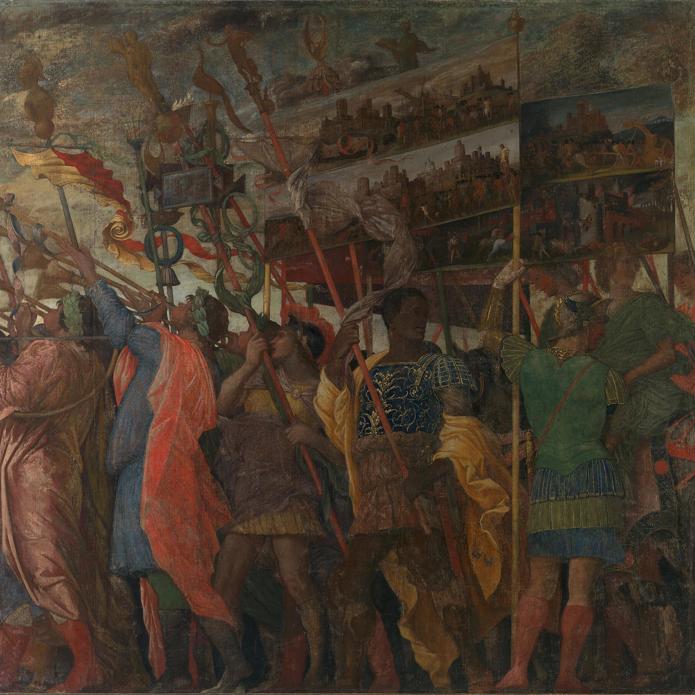
Overview
These are six of the nine monumental canvases known as The Triumphs of Caesar, painted by Andrea Mantegna between the mid-1480s and 1506. They depict a magnificent procession celebrating the victories of the Roman general – and later dictator – Julius Caesar over Gaul between 58 and 50 BC.
Mantegna embarked on this highly ambitious project when he was working as court painter for the ruling Gonzaga family in Mantua. He drew on ancient and contemporary writings for this powerful and sustained evocation of the classical world, as well as the imagery of Roman antiquities, such as friezes and monumental arches.
The Triumphs were acquired by King Charles I of England in 1629, when he purchased many Gonzaga treasures. Considered the jewel in the crown of the king’s paintings, they arrived in England the following year and were hung in Hampton Court Palace.
The Triumphs have since seldom left Hampton Court, but their dedicated gallery is now undergoing refurbishment (completion planned for 2026). Six of the nine are on display in the National Gallery, having been generously loaned by His Majesty the King.

